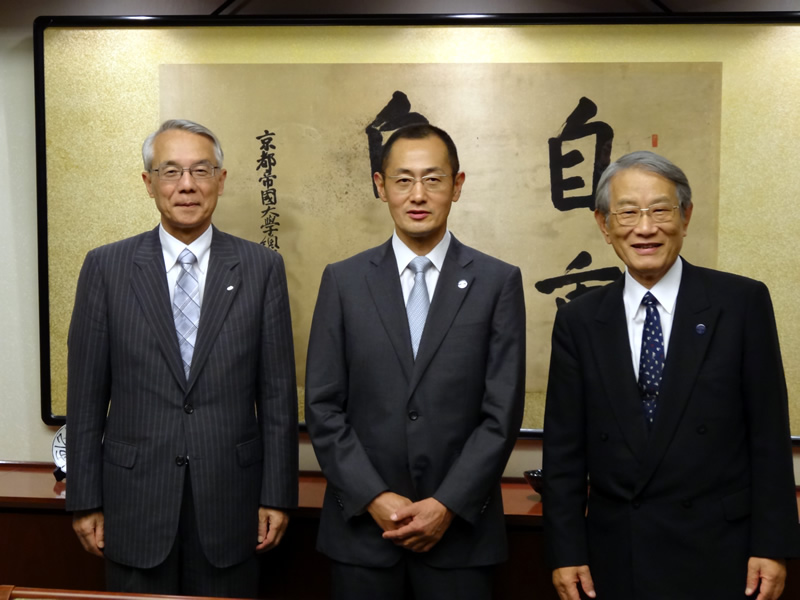We offer our heartfelt congratulations to Dr. Shinya Yamanaka, Professor at Kyoto University, on being awarded the Nobel Prize in Physiology or Medicine.
This year, the prize has been awarded for the discovery that mature cells can be reprogrammed to become pluripotent.*1 I believe the creation of the world's first artificially induced pluripotent stem cells, which are of such great use to medical treatment, is evaluated as a development of huge significance.
JST has been supporting Dr. Yamanaka's research since 2003, and in that period, Induced pluripotent stem cells (iPS cells) were first created in 2006. Impressed by these results, other countries engaged in iPS cell research en masse and international research competition was begun. In response to this, JST further strengthened its support of Dr. Yamanaka and research into iPS cells, and as a result iPS cell research is currently demonstrating great progress.
Having supported the research in this way, from the point of view of JST Dr. Yamanaka's achievements are twofold:
Firstly, by using iPS cells we can better understand the causes of various incurable diseases, such as ALS (Amyotrophic lateral sclerosis), etc., and the development of medical treatment can thereby be advanced. The world's first clinical study into "age-related macular degeneration", an eye condition caused by advanced aging, is planned to be carried out in Japan, attempting to realize "dream regeneration treatments" using one's own cells. In doing so, they are trying to bring about a great medical revolution.
Secondly, Dr. Yamanaka's achievements can be seen as an example of the success of science and technology policy in Japan, which aims for innovation and social change through science and basic research. It is hoped that the awarding of this Nobel Prize will further inspire mission-oriented basic research in other fields.
In the future, JST will not only contribute to the development of iPS cell research in Japan, but will also endeavor to foster the overall development of science and technology.
October 8, 2012
Michiharu Nakamura
President of Japan Science and Technology Agency

Dr. Shinya Yamanaka (center) and president of Japan Science and Technology Agency Michiharu Nakamura (left), president of Kyoto University Hiroshi Matsumoto (right)
(supplementary information)
Relationship with JST
From October 2003 until March 2009, Dr. Yamanaka was a research leader on the topic of "Generation of Pluripotent Stem Cells for Clinical Application", within the "Translational Research for Intractable Immune Disorders and Infectious Diseases" field of research of the Core Research for Evolutional Science and Technology (CREST)*2 program, one of Japan Science and Technology Agency's team-oriented strategic basic research programs. While in that role, he conducted research aimed at producing new type stem cells that were an ideal alternative to embryonic stem (ES) cells which are associated with various ethical issues, and their application in regenerative medicine. In that research, Dr. Yamanaka demonstrated exceptional insight and leadership ability and succeeded in creating iPS cells as an ideal stem cell, taking a big step towards the realization of successful regenerative medical treatments, such as transplants, etc.
In April 2008, taking over from the CREST research achievements, the "Yamanaka iPS Cell Project" (supervised by Dr. Shinya Yamanaka)*3 was launched at JST to further accelerate research into iPS cells. In the same year, iPS cell fields of research were established in both the CREST*4 and PRESTO*5 programs. Furthermore, in 2009 to promote the development of industry, the "Strategic Promotion of Innovative Research and Development" (S-Innovation) program*6for acceleration of industry-academia innovation through cooperation, was also implemented.